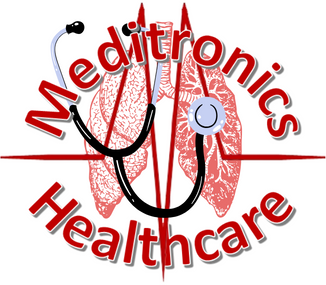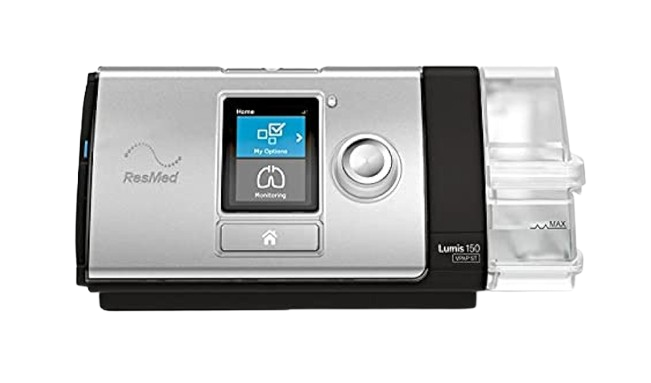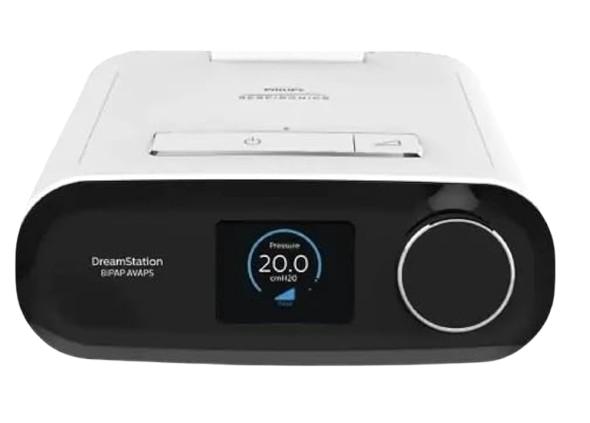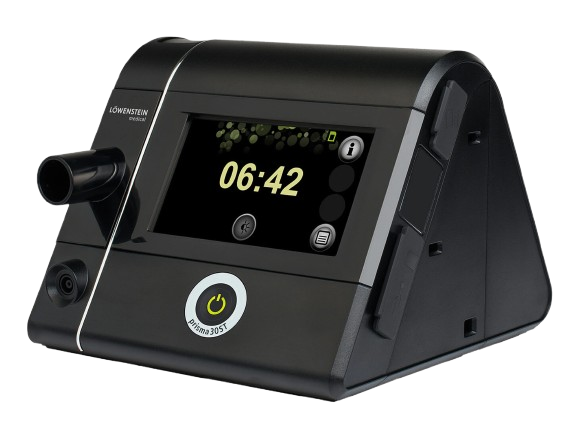AVAPS Machines
To rent or purchase, please dial +91 63096 57730
AVAPS stand for Average Volume Assure Pressure Support is an advanced mode of non-invasive ventilation designed to maintain a target tidal volume while automatically adjusting inspiratory pressure. It offers a balance of precision, adaptability, and comfort, making it suitable for patients with chronic respiratory insufficiency.
What is AVAPS?
It is a mode available in certain non-invasive ventilators that ensures a stable volume of air delivered with each breath. Unlike fixed-pressure therapies (BiPAP) which only maintains fixed inspiratory and expiratory pressures, it adapts automatically to a patient’s changing respiratory needs throughout the night, ensuring both efficacy and comfort.
Key Features:
- Adaptive Support – Automatically adjusts pressure to maintain targeted tidal volume.
- Comfort & Compliance – Provides a gentler transition for patients with variable breathing patterns.
- Non Invasive Therapy – Avoids the need for invasive ventilators in many cases.
- Advanced Monitoring – Tracks breathing parameters to ensure effective therapy.
- Customizable Settings – Suitable for both home and hospital use.
How Does AVAPS Work?
- Monitors patient’s breathing cycle in real time.
- Adjusts inspiratory pressure support automatically to maintain a preset tidal volume.
- Provides smooth, gradual pressure transitions for enhanced comfort.
- Works in both hospital and home-care settings for long-term respiratory support
Who Needs AVAPS Therapy?
This therapy is recommended for patients with:
- Chronic Obstructive Pulmonary Disease (COPD) with hypoventilation
- Obesity Hypoventilation Syndrome (OHS)
- Neuromuscular Disroders (e.g., ALS, Muscular Dystrophy)
- Complex sleep-related Breathing Disorders
- Chronic respiratory insufficiency requiring long-term support
Educational Video
🙏 Thank you for watching!
We hope exploring AVAPS was informative.
Better Breathe... Sound Sleep!
📚 Explore Other Therapy Devices
Benefits of AVAPS:
- Improved sleep quality and daytime alertness
- Stable oxygen and carbon dioxide levels
- Reduced hospital admissions for chronic patients
- Better adaptation for progressive conditions
- Non-invasive solution with high comfort level
- More tolerable than fixed pressure modes
- Useful in both acute care and home therapy
- Automatic settings save clinician effort
BiPAP vs AVAPS:
Here’s a quick comparison to help you understand the difference:
Feature | Average Volume Assure Pressure Support | |
Pressure | Fixed inspiratory / expiratory pressure | Automatically adjust pressure support |
Volume Delivery | May vary depending on patient effort | Ensures consistent tidal volume |
Comfort | Good, but limited adaptability | Higher comfort with adaptive support |
Clinical Use | Common for acute support | Preferred for chronic and long-term therapy |
Monitoring | Limited | Advanced monitoring of tidal volume |
Tips for Using a AVAPS Machine:
- Set target tidal volume based on patient needs (usually 6-8 ml/kg ideal body weight).
- Start with clinician-recommended settings and adjust gradually.
- Ensure mask fit is snug to prevent air leakage.
- Use humidification to reduce dryness and discomfort.
- Always consult a respiratory therapist or physician before adjustment.
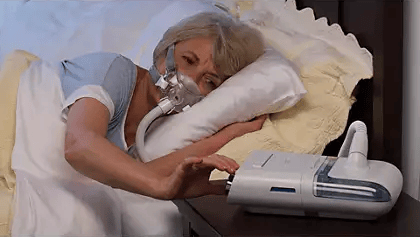
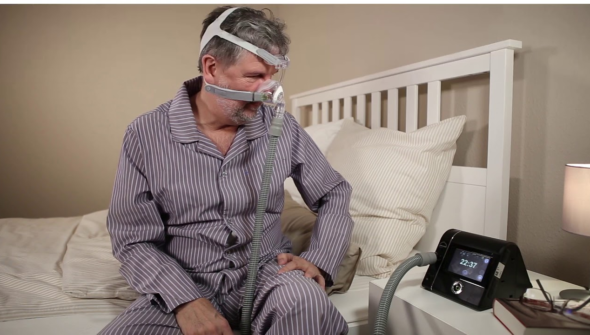
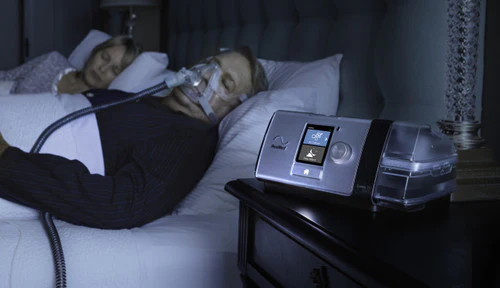
Usage & Maintenance
For Patients:
- Always use it under medical guidance.
- Ensure the mask fits properly to avoid air leaks.
- Keep a regular follow-up with your healthcare provider.
- Use distilled water in humidifiers to prevent mineral deposits.
- Clean your mask daily and tubing weekly.
For Caregivers:
- Check machine filters regularly and replace when needed.
- Store the device in a clean, dry area away from direct sunlight.
- Maintain proper hygiene to prevent infections.
- Monitor patient comfort and therapy effectiveness using device reports.
Frequently Asked Questions (FAQs)
How is AVAPS different from BiPAP?
It maintains a consistent tidal volume by adjusting pressure, while BiPAP only maintains set pressure levels. AVAPS is better for patients with variable breathing needs.
Can AVAPS be used at home?
Yes, these machines are portable and designed for home use under medical supervision.
Is AVAPS comfortable for long-term use?
Yes. It provides gradual and adaptive pressure changes, making it more comfortable for patients compared to fixed-pressure systems.
Which patients benefit the most from AVAPS?
Patients with COPD, OHS, neuromuscular disorders, and chronic respiratory failure benefit significantly from this therapy device.
Do I need a prescription for AVAPS therapy?
Yes. It is prescribed by doctors for patients with specific respiratory conditions.
Is AVAPS comfortable to use during sleep?
Yes, it adapts pressure gently and ensures more natural breathing patterns, making it more comfortable for patients.
What masks are compatible with AVAPS machines?
Both nasal masks and full-face masks can be used depending on patient requirements.
Is AVAPS suitable for sleep apnea?
It is typically used for complex cases like hypoventilation and neuromuscular disorders, not routine obstructive sleep apnea.
How often should AVAPS device be maintained?
Regular cleaning and timely replacement of parts (mask, tubing, filters) is recommended. Annual service checks by professionals are advisable.
